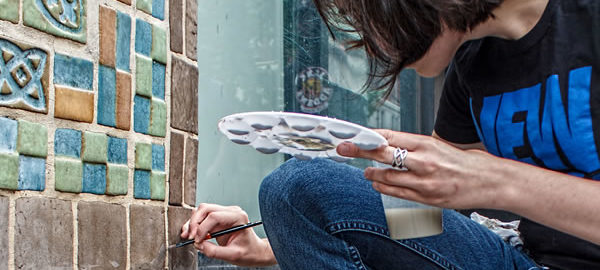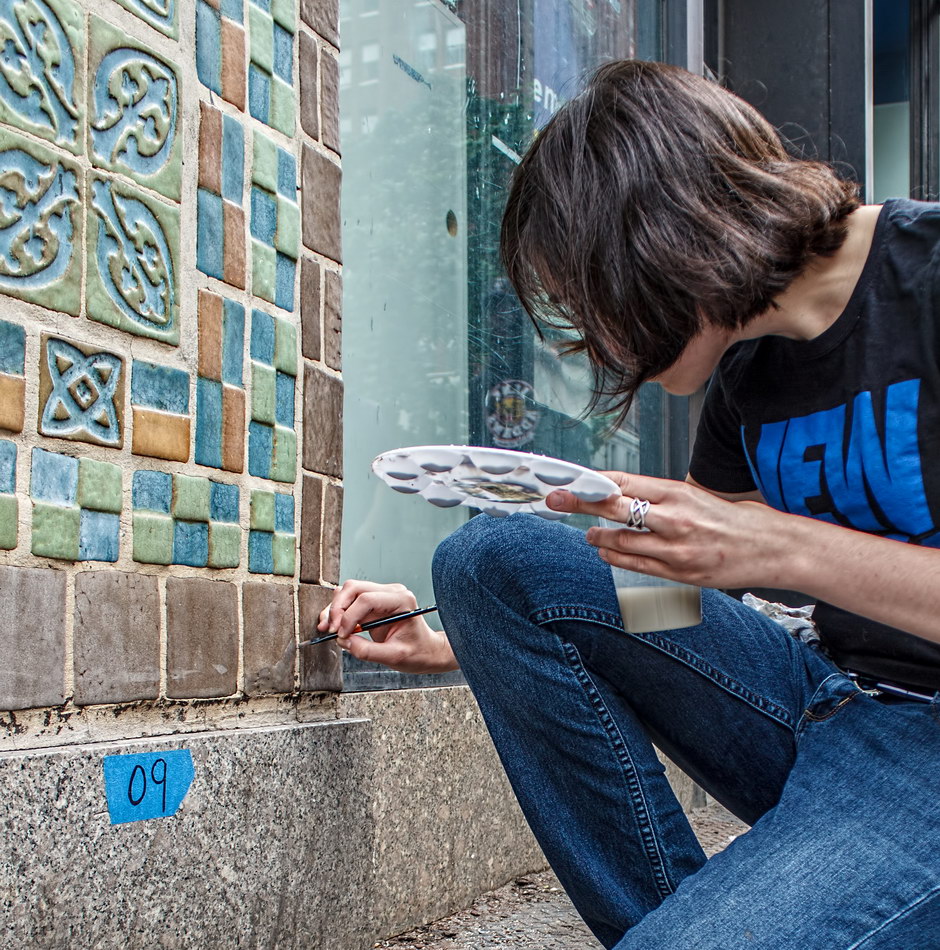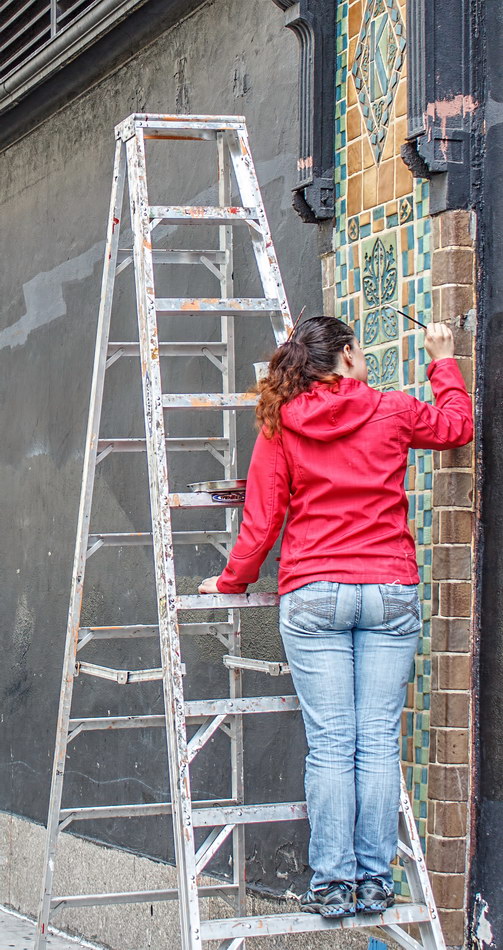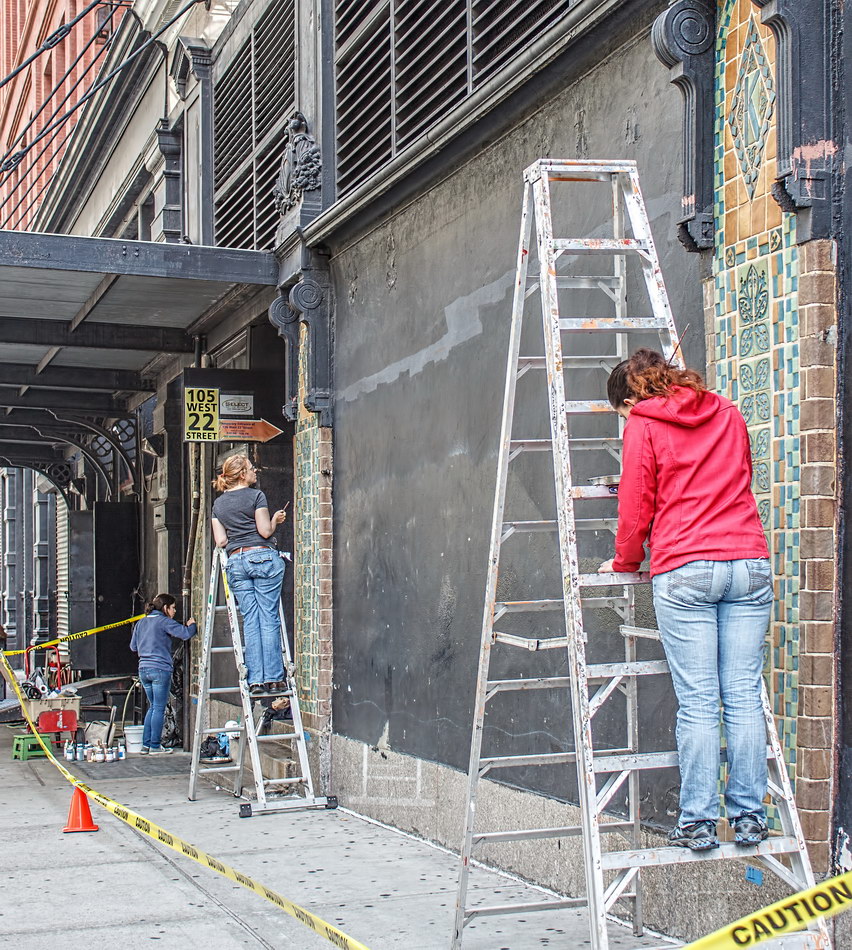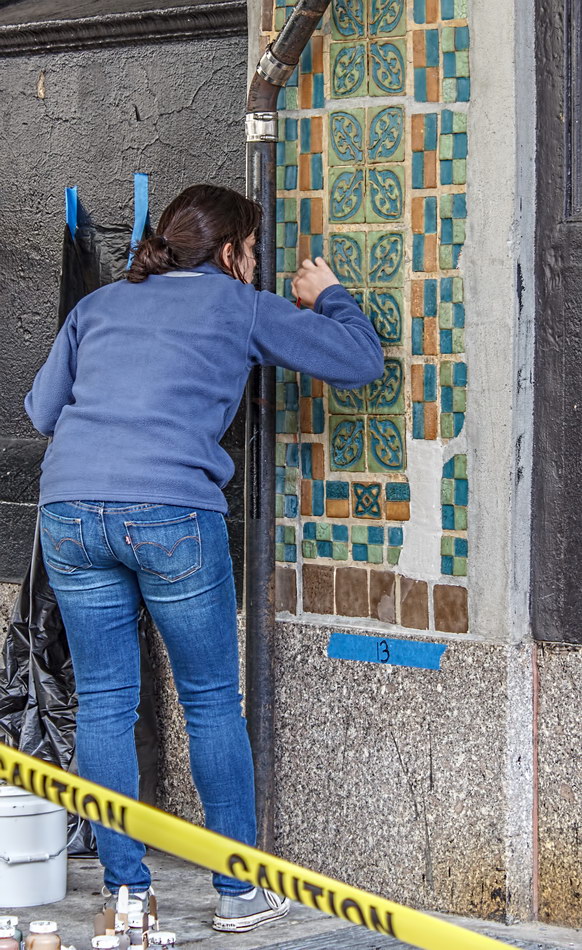If you’ve ever wondered how an old building could look so new, here’s how!
A restoration team from Jablonski Building Conservation, Inc. is restoring the facade of 105 W 22nd Street / 695-709 Sixth Avenue. Xsusha Flandro, Senior Conservator, was kind enough to explain the process:
“The tiles are glazed ceramic tiles manufactured by the Hartford Faience Company (incorporated from the Atwood Faience Company in 1894). The current building was erected in phases between 1889 and 1911. The tiles are ca. 1913 when Chicago business man J.L. Kesner (hence the “K” on the tile columns) leased the building and submitted plans for alteration to the first floor store fronts. Oddly enough Kesner was never in the building as he backed out of the lease, but since the construction plans were already submitted the Ehrich Brothers (owners of the building) went through with the building plans and completed the tile columns. The building is a contributing member to the Ladies Mile Historic District.
“A lot of prep work goes into the restoration of tiles. The first thing we did were cleaning tests. We completed small cleaning test samples and then based on results proceeded with the most gentle and effective of the cleaners tested to clean all the tiles. We also tested paint strippers (all pH neutral – not acidic and not alkaline – because harsh strippers can damage the glazes) in the same manner as the cleaners because some columns had graffiti and general over paint. After cleaning and paint removal we moved into removing abandoned anchors (where signage and such had been attached over the years). Then we moved into patching. We utilized a repair system manufactured by Edison Coatings out of Connecticut. Edison Coatings provided us with custom colored patch repair material for each color of glaze, after the patching was complete the patches are sanded and shaped to the correct profile, and then in-painted (only painted where the patch is) using a polyurethane paint system (also by Edison Coatings) custom colored to the glazes on the tiles. This is where the artistry comes in and we blend the colors onsite to match the adjacent historic tile glazes. No coating is placed over the work after we are finished, as everything we use is specifically manufactured for outdoor use.
“In this project we are conserving nine tile columns. All missing tiles or tiles which we could not successfully conserve are being replaced with custom tiles, manufactured by Shenfeld Studios, to match the existing. It took us approximately three weeks to complete all the conservation work on site. The replacement tiles are still a few months out.”
Ms. Flandro noted that the work requires extensive training.
“To be an architectural conservator you have to have a Master’s degree in Historic Preservation – and usually in the conservation sector of historic preservation, which is where you gain a lot of your materials knowledge. Similar to how art conservators go through school and then specialize in one material, we go through school and specialize in building materials. In our company in order to progress past junior conservator we are required to apply to be a Professional Associate with the American Institute of Conservation (of which I hold PA status and the owner of Jablonski Building Conservation, Mary Jablonski, is a Fellow.) AIC – Professional Associate requires at very least 3 years’ experience and your previous projects/works are peer reviewed and letters of recommendation are required.”
(The company’s website is jbconservation.com.)
